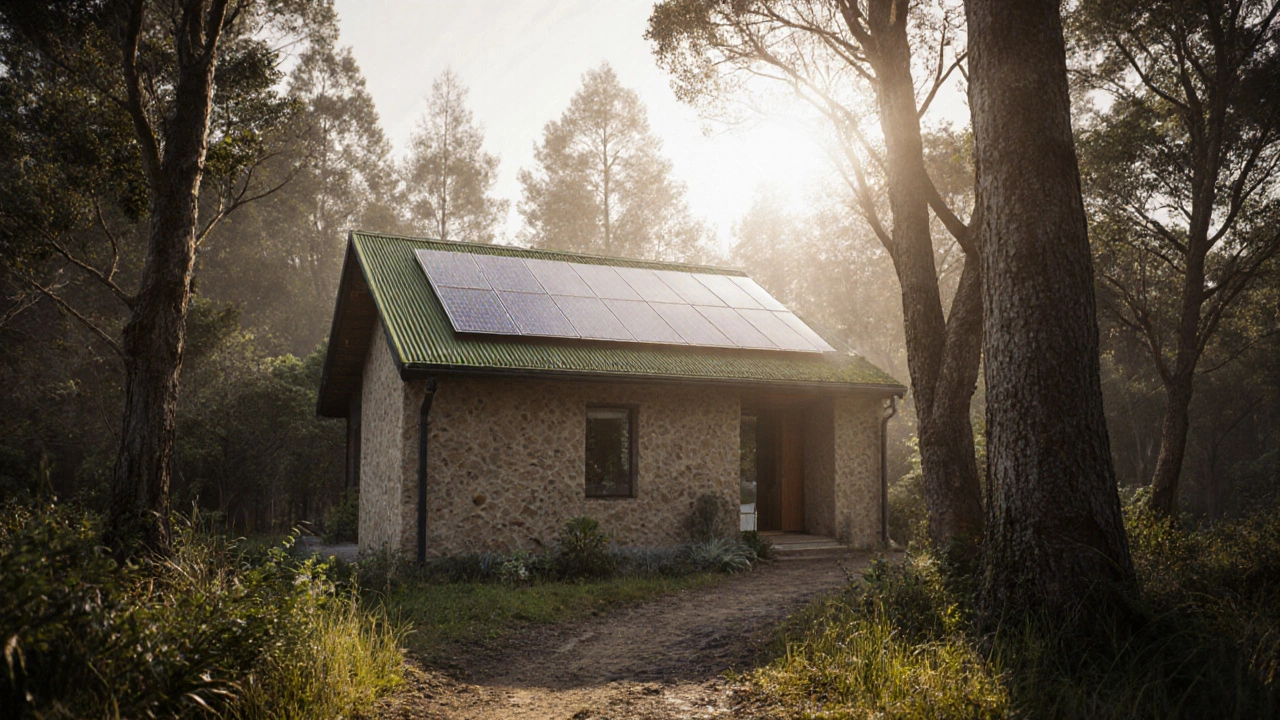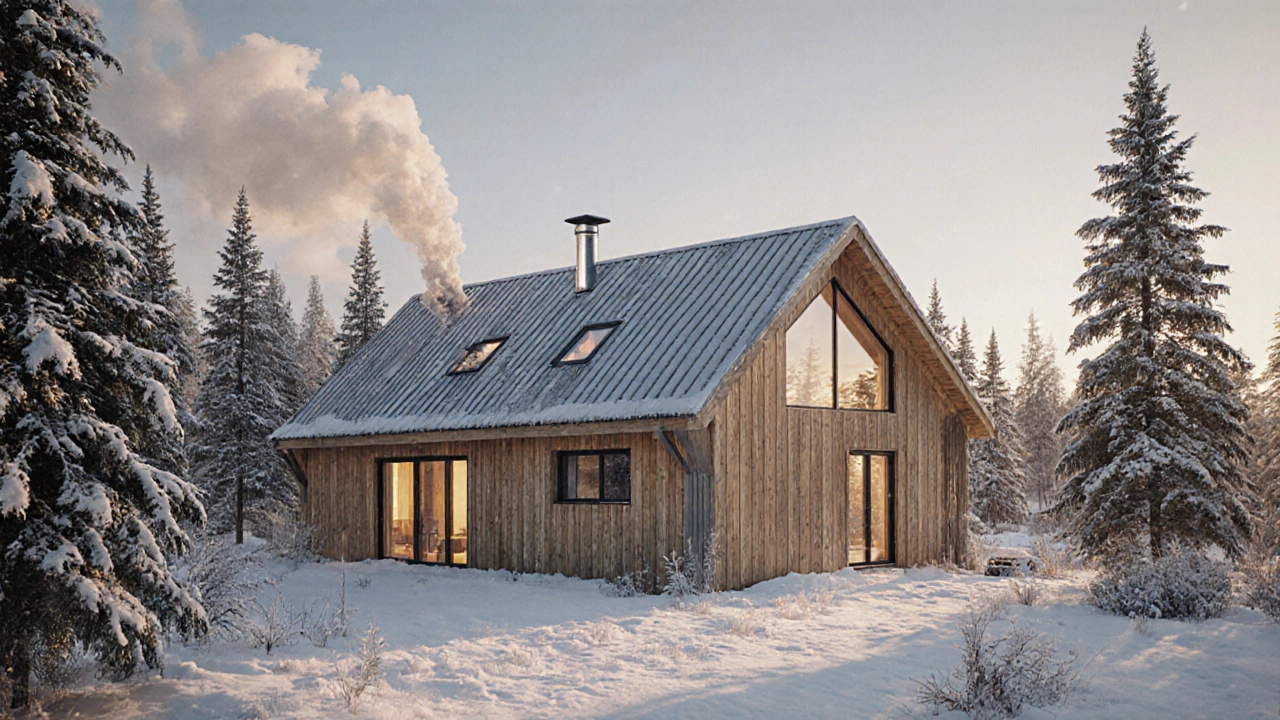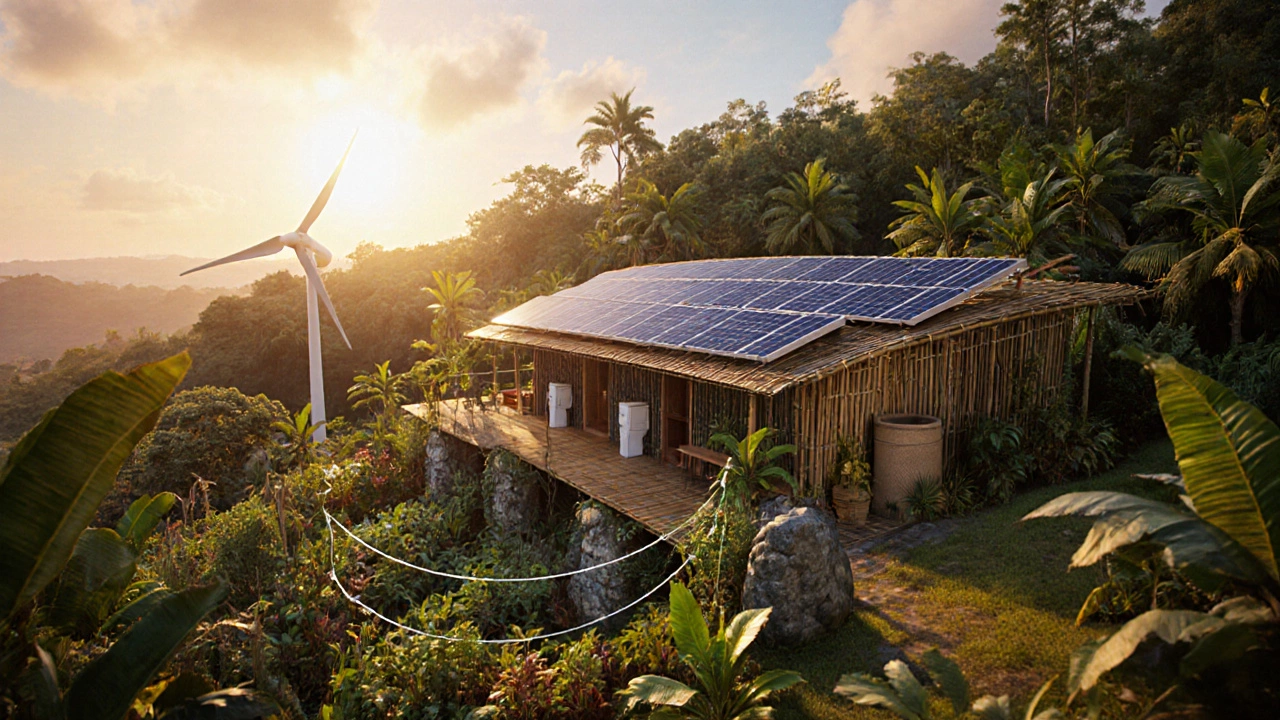Best Places to Build an Eco-Friendly House in 2025
 Oct, 27 2025
Oct, 27 2025
Sustainable Location Assessment Tool
Strengths:
Weaknesses:
Recommended Locations:
Building an eco-friendly house isn’t just about solar panels and recycled wood. It’s about choosing the right place to build-one that works with nature, not against it. If you’re dreaming of a low-impact, energy-smart home, where you live matters just as much as how you build it. The best spot isn’t the most scenic or the cheapest. It’s the one that gives you clean energy, natural insulation, and long-term resilience.
Why Location Beats Materials
People get obsessed with green materials-bamboo floors, reclaimed bricks, non-toxic paint. And yes, those help. But if your house sits in a place with no sun, freezing winters, and no access to wind or rainwater harvesting, even the best materials won’t save you from high bills or constant repairs. Location is the silent hero of sustainable living.
Take a house built with 100% recycled steel in Arizona. It’s going to cook in summer unless you spend a fortune on AC. Now picture the same house in coastal British Columbia, where rain is abundant, temperatures stay mild, and trees naturally shade the property. Suddenly, passive design works. Your heating bill drops. You don’t need a giant solar array. You’re living sustainably without trying.
Top Five Places to Build an Eco-Friendly House
1. Southern New Zealand (Nelson, Marlborough, Otago)
New Zealand leads the world in renewable electricity-over 80% comes from hydro, wind, and geothermal sources. In Nelson, you get 2,400 hours of sunshine a year, making solar panels incredibly efficient. The climate is mild, with cool winters and warm summers-perfect for passive solar design. Thick native forests provide natural windbreaks, and the soil is stable for foundation work. Rainwater harvesting is legal and encouraged. Many local councils offer grants for green building, and there’s a strong culture of off-grid living.
One couple in Marlborough built a 90-square-meter home using rammed earth walls and a green roof. They run entirely on solar and rainwater. Their annual energy bill? $42. That’s not a typo.
2. Southern Sweden (Skåne, Halland)
Sweden has some of the strictest green building codes in Europe. In Skåne, you’ll find long, bright summers and snow-covered winters-ideal for thermal mass homes. Local builders use timber from sustainably managed forests, and passive house standards are common. The government gives up to 30% back in tax credits for energy-efficient upgrades. Wind power is abundant along the coast, and district heating systems are widespread in towns.
A family in Halmstad built a home with triple-glazed windows, underground thermal storage, and a heat pump that pulls warmth from the ground. They’ve cut their carbon footprint by 85% since 2020. The house even heats their greenhouse in winter.
3. Costa Rica (Pacific Coast, Monteverde)
Costa Rica runs on nearly 100% renewable energy. The country banned fossil fuel vehicles in 2021 and now has electric charging stations everywhere. The Pacific coast gets steady trade winds and heavy rainfall-perfect for wind turbines and rainwater collection. The climate is warm year-round, so you don’t need heating. Building codes require setbacks from rivers and forests, protecting biodiversity.
A couple in Monteverde built a bamboo-and-recycled-tin home on a hillside. They use composting toilets, solar water heaters, and a drip irrigation system for their food garden. They generate 20% more electricity than they use and sell the surplus back to the grid.
4. Western Oregon (Willamette Valley, Ashland)
Oregon has aggressive green building laws and strong incentives. The Willamette Valley has fertile soil, moderate rainfall, and four distinct seasons. Homes here are often built with straw bale insulation and local cedar. The state offers up to $10,000 in rebates for solar installations and geothermal heat pumps. Wildfires are a concern, but newer building codes require fire-resistant materials and defensible space.
A builder in Ashland constructed a net-zero home using cross-laminated timber (CLT) from Oregon forests. The house has a green roof, solar carport, and rainwater filtration system. It’s been certified as a Living Building Challenge project-among the toughest green standards in the world.
5. Iceland (Reykjavik outskirts, Westfjords)
Iceland is powered almost entirely by geothermal and hydroelectric energy. The ground stays warm year-round, so geothermal heat pumps work like magic. Even in winter, you can dig a few feet and find 10°C air. The country has no natural gas or coal, so every home must be energy-smart. Building codes require high insulation levels, and most homes use heat recovery ventilation systems.
A family near Akureyri built a home using local lava rock and wool insulation. They heat their house and water with geothermal wells, grow food in a greenhouse powered by excess heat, and use LED lighting with motion sensors. Their annual energy use? 1,200 kWh. The average American home uses 10,000.

What to Avoid
Not all green-seeming places are truly sustainable. Avoid:
- Deserts with no water access-even if solar is great, you’ll need expensive water delivery systems.
- Coastal zones with high erosion-building too close to the ocean risks damage from storms and rising seas.
- Areas with no grid access or unreliable utilities-if you can’t get permits for solar or rainwater systems, you’re stuck.
- Regions with extreme temperature swings-like the Great Plains or central Australia. You’ll need massive insulation and HVAC systems, which defeat the purpose.
How to Pick Your Spot
Ask yourself these questions before buying land:
- What’s the average annual sunlight? (Aim for 4+ peak sun hours daily)
- How much rain falls each year? (Over 750mm is ideal for rainwater harvesting)
- Is wind consistent? (5+ m/s average helps with small turbines)
- What’s the ground temperature 2 meters down? (Stable 8-12°C is perfect for geothermal)
- Are there local incentives for green building? (Check government websites for rebates)
- Can you build off-grid legally? (Some areas ban septic or rainwater systems)
Use free tools like the NREL Solar Resource Map or WorldClim to check climate data. Don’t rely on real estate agents-they don’t know energy performance.

Real Results, Not Just Theory
A 2024 study by the International Energy Agency tracked 327 eco-homes built between 2020 and 2024. Homes in New Zealand, Sweden, and Iceland used 70-85% less energy than the average home in their countries. Homes in Costa Rica and Oregon used 65-75% less. The biggest savings came from smart location choices-not fancy tech.
One homeowner in Nelson switched from a diesel generator to solar + battery. She now pays $0 for electricity. Her home stays warm in winter without a furnace. She grows 80% of her food. She didn’t spend a fortune. She just picked the right place.
Next Steps
If you’re serious about building an eco-friendly house:
- Visit your top 3 locations in different seasons. Stay in a local Airbnb for a week.
- Talk to people who already live off-grid. Ask how much they spend on energy and water.
- Check local building codes. Some places require permits for composting toilets or solar arrays.
- Get a soil test. Clay soils hold heat well; sandy soils drain too fast.
- Don’t rush. The best eco-home takes 18-24 months to plan.
The goal isn’t to be perfect. It’s to be smarter than the average home. Choose a place that gives you free energy, natural comfort, and quiet resilience. That’s where the real savings-and peace-begin.
Can you build an eco-friendly house anywhere?
You can technically build one anywhere, but it won’t be efficient or affordable. Places with extreme heat, cold, or drought require more energy and resources to maintain comfort, which defeats the purpose of being eco-friendly. The best results come from locations with mild climates, good sun exposure, and reliable rainfall.
Is it cheaper to build an eco-friendly house than a regular one?
Upfront, yes-it can cost 10-20% more due to materials and design. But over 10 years, you’ll save 50-80% on energy and water bills. In places like New Zealand or Iceland, many homeowners break even in 5-7 years. The real savings come from location: using natural sun, wind, and ground heat cuts costs dramatically.
Do I need to go completely off-grid?
No. Many eco-homes stay connected to the grid for backup. The goal is to reduce your footprint, not eliminate all modern conveniences. In fact, grid-tied solar systems often pay you back for excess power. Off-grid is great if you’re remote, but it’s not required for sustainability.
What’s the easiest green feature to add?
Passive solar design. That means placing windows on the south side (in the Northern Hemisphere) or north side (in the Southern Hemisphere) to capture winter sun. Add overhangs to block summer heat. It costs almost nothing to design this way and can cut heating needs by half.
How do I know if a piece of land is good for an eco-home?
Look for south-facing slopes (Northern Hemisphere) or north-facing (Southern Hemisphere), with good drainage and access to trees for shade. Check local climate data for rainfall and wind patterns. Avoid flood zones, steep slopes, and areas with poor soil. Talk to neighbors about power outages, water shortages, and heating costs.